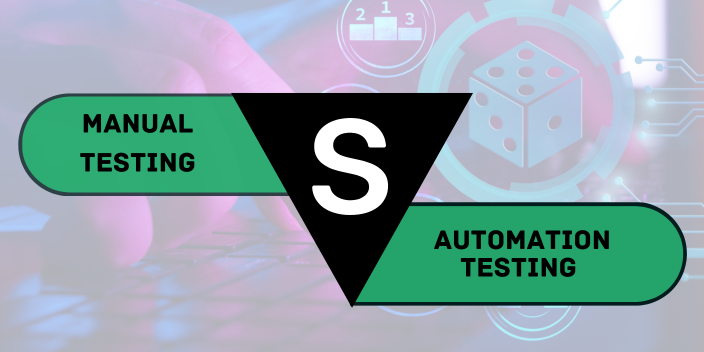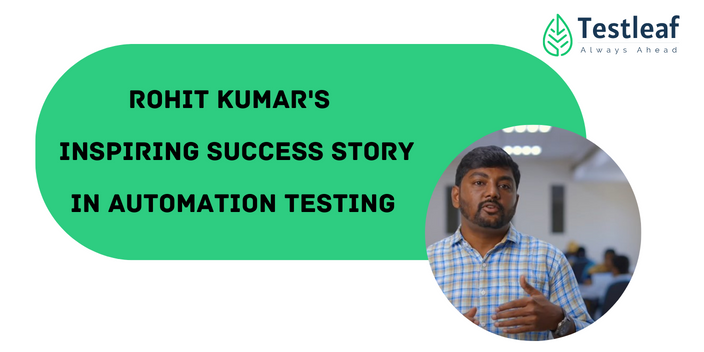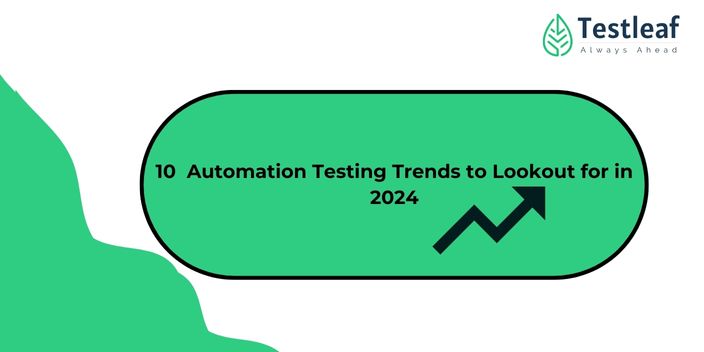Introduction to AI-Powered Automation Testing
In 2025, AI-powered automation testing is no longer a futuristic concept — it’s a core component of modern QA strategies. With the rapid acceleration of digital transformation, businesses need more reliable, faster, and scalable testing solutions. Automation software testers now rely on intelligent systems to drive precision and speed across testing pipelines.
As automation testing evolves, artificial intelligence is becoming a driving force behind smarter, self-adaptive, and context-aware test environments. Whether you’re a QA engineer, a team leader, or someone exploring an online testing course to upskill, this guide outlines the essential tools reshaping the landscape in 2025.
Why AI is Transforming Software Testing
Benefits of AI in Automation Testing
Reduced Manual Efforts
AI eliminates redundant manual work by automatically generating and maintaining test scripts. Features like self-healing tests reduce the maintenance burden significantly, especially in dynamic UI environments.
Faster Time-to-Market
With intelligent prioritization and predictive analytics, AI shortens the testing cycle. This allows QA teams to deliver high-quality software more frequently and reliably.
Improved Test Coverage and Accuracy
AI-driven tools enhance coverage by simulating real-world scenarios and detecting edge cases that traditional tools may overlook. Machine learning algorithms analyze user behavior, usage patterns, and historical bugs to optimize test cases.
Key Trends Driving AI Adoption in QA
- Shift-left testing with integrated AI analytics.
- Widespread use of online testing courses and testing courses online to train QA teams in AI tools.
- Adoption of low-code/no-code platforms with intelligent test orchestration.
- Real-time monitoring and self-adjusting test flows using ML.
What to Look for in AI Automation Testing Tools in 2025
Core Features and Functionalities
Self-Healing Test Scripts
AI-powered test cases can automatically detect UI changes and adjust scripts accordingly, preventing test failures due to minor front-end updates.
Predictive Test Analytics
Tools with built-in predictive analytics help QA teams make data-driven decisions. They highlight areas with high defect density and prioritize test cases that cover critical user paths.
Visual Testing Capabilities
Visual AI compares UI snapshots across browsers and devices to catch layout issues. This ensures consistency in look and feel across platforms.
Integration Capabilities and CI/CD Support
Top tools offer native support for CI/CD pipelines like Jenkins, GitLab, and Azure DevOps, enabling seamless test automation across the development lifecycle.
Ease of Use and Scalability for QA Teams
Modern tools come with intuitive dashboards, drag-and-drop interfaces, and detailed reporting, making them accessible even to those new to automation testing or taking an online testing course.
The 12 Best AI Tools for Automation Testing in 2025
1. Testim by Tricentis
Testim helps teams quickly create stable tests using AI and manage them at scale. It’s ideal for fast-paced CI/CD environments.
- Strengths: AI-powered scriptless automation, self-healing capabilities, smart locators, robust CI/CD integration.
- Weaknesses: May require initial setup time to optimize AI models.
- Pricing Model: Contact for pricing.
- Website: https://www.testim.io
2. Functionize
Functionize enables end-to-end testing using plain English, making test creation accessible and smart through its AI-driven engine.
- Strengths: Natural language test creation, autonomous test maintenance, real-time debugging.
- Weaknesses: Learning curve for leveraging full AI capabilities.
- Pricing Model: Contact for pricing.
- Website: https://www.functionize.com
3. Applitools
Applitools excels in visual UI testing by using Visual AI to catch UI bugs quickly across multiple screen sizes and browsers.
- Strengths: Visual AI testing, Ultrafast Grid for parallel testing, cross-browser compatibility.
- Weaknesses: Primarily focused on visual testing; may need integration with other tools for full test coverage.
- Pricing Model: Free trial available; enterprise plans with unlimited tests and users.
- Website: https://applitools.com
4. Mabl
Mabl streamlines testing with AI-powered insights, making it easier to identify defects and ensure high application quality.
- Strengths: Unified platform for UI, API, and performance testing; AI engine for root-cause analysis and anomaly detection.
- Weaknesses: Pricing may be higher for small teams.
- Pricing Model: Customized pricing based on organizational needs.
- Website: https://www.mabl.com
5. TestCraft
TestCraft is built for non-programmers and offers a visual way to automate web application testing with fast test maintenance.
- Strengths: Codeless Selenium-based automation, visual interface, real-time test maintenance powered by machine learning.
- Weaknesses: Limited advanced features compared to competitors.
- Pricing Model: Contact for pricing.
- Website: https://www.testcraft.io
6. Virtuoso
Virtuoso allows QA teams to write tests in plain English and automate them across platforms using advanced AI capabilities.
- Strengths: Autonomous end-to-end testing, NLP support, and designed for enterprise environments.
- Weaknesses: May be complex for small teams or simple applications.
- Pricing Model: Customized plans based on team size and requirements.
- Website: https://www.virtuosoqa.com
7. AccelQ
AccelQ helps with end-to-end automation across web, mobile, API, and desktop, with strong support for agile and DevOps teams.
- Strengths: Cloud-based continuous testing, AI-driven test design and maintenance, tight CI/CD integration.
- Weaknesses: Requires training to fully utilize features.
- Pricing Model: Contact for pricing.
- Website: https://www.accelq.com
8. Parasoft SOAtest
Parasoft SOAtest excels in API testing by providing AI-enhanced analytics to help prioritize test cases and uncover issues early.
- Strengths: API testing with AI-driven risk-based insights, code coverage analysis.
- Weaknesses: Primarily focused on API testing; may need additional tools for UI testing.
- Pricing Model: Contact for pricing.
- Website: https://www.parasoft.com/products/parasoft-soatest/
9. TestSigma
TestSigma offers a modern test automation solution with a no-code approach, enabling faster test creation and execution.
- Strengths: Unified platform for web, mobile, and API testing; AI-powered smart element identification; NLP-based scripting.
- Weaknesses: Advanced features may require enterprise plan.
- Pricing Model: Pro and Enterprise plans with customized pricing
- Website: https://testsigma.com
10. Katalon Studio
Katalon Studio simplifies automated testing with AI support and an intuitive UI, making it great for teams of all skill levels.
- Strengths: AI-assisted testing platform suitable for beginners and professionals; supports web, mobile, API, and desktop testing.
- Weaknesses: Advanced features require paid plans.
- Pricing Model: Freemium model with free and paid tiers.
- Website: https://katalon.com
11. Eggplant by Keysight
Eggplant enables intelligent automation by visually testing apps like a real user, ensuring consistent user experiences.
- Strengths: AI-powered UI and UX testing across devices; image-based automation.
- Weaknesses: High initial cost for full license.
- Pricing Model: Free trial available; Quick Start at $9,999; full license pricing upon request.
- Website: https://www.keysight.com/find/try-eggplant
12. Saucelabs with AutonomIQ
Saucelabs with AutonomIQ combines low-code automation and AI to accelerate testing across web and mobile applications.
- Strengths: Autonomous testing, low-code test generation, scalable for QA teams of all sizes.
- Weaknesses: May require initial setup and training.
- Pricing Model: Contact for pricing.
- Website: https://saucelabs.com
AI Testing Tools vs Traditional Automation Tools
Speed and Efficiency Comparison
AI tools outperform traditional tools with faster execution, intelligent prioritization, and autonomous test case generation.
Maintenance and Scalability
Self-healing capabilities drastically reduce maintenance. Most AI tools are cloud-native, making them highly scalable.
ROI for QA Teams
Initial investment may be higher, but AI tools deliver faster feedback, reduced defect leakage, and lower long-term maintenance costs.
Real-World Use Cases: How Companies Use AI in Testing
Case Study: E-commerce Platform
An online retailer used Applitools and Testim to test UI across multiple browsers. AI reduced test creation time by 40% and bug detection improved by 60%.
Case Study: SaaS Product
A SaaS company used Mabl and Katalon to automate regression tests, integrating them into their CI/CD pipeline. Result: 50% faster releases.
Case Study: Banking and Financial Services
A banking enterprise adopted Functionize for compliance testing. Predictive analytics flagged potential test coverage gaps, increasing test confidence.
Challenges in Adopting AI Tools for Testing
Tool Complexity and Learning Curve
Although many platforms are designed to be low-code, transitioning from traditional tools requires upskilling. Investing in a testing course online can help bridge the gap.
Data Privacy and Security Concerns
Cloud-based tools often raise concerns about data confidentiality. It’s critical to choose vendors with strong security certifications.
Resistance to Change in QA Teams
Teams accustomed to legacy tools may resist AI adoption. A phased approach and hands-on training via automation software tester programs are key.
Future of AI in Automation Testing (Beyond 2025)
The Role of Generative AI in QA
Tools are starting to use generative AI to write test cases based on requirements or user stories.
Adaptive Testing with Machine Learning
ML models can now adapt test scenarios in real-time based on user behavior and system changes.
Autonomous Test Bots and Hyper Automation
We’re moving toward bots that can perform exploratory testing and integrate seamlessly with DevOps pipelines.
Tips for QA Teams to Transition to AI-Powered Testing
Upskilling QA Engineers
Encourage team members to enroll in online testing courses that focus on AI-powered tools, self-healing scripts, and NLP test creation.
Piloting AI Tools on Small Projects First
Start with non-critical modules or regression testing to evaluate a tool’s ROI before full-scale deployment.
Evaluating AI Tools Based on Business Needs
Choose tools based on your tech stack, team size, and release frequency. Don’t fall for features you won’t use.
Conclusion: Choosing the Right AI Tool for Your Testing Strategy
Choosing the right AI tool depends on your goals, team skill level, and project complexity. From visual testing to end-to-end automation, the tools listed above offer diverse capabilities suited for both enterprises and startups. As the testing world evolves, enrolling in a testing course online or getting certified as an automation software tester will be crucial to staying competitive. Embracing AI is not just about tools—it’s about future-proofing your QA process.
We Also Provide Training In:
- Advanced Selenium Training
- Playwright Training
- Gen AI Training
- AWS Training
- REST API Training
- Full Stack Training
- Appium Training
- DevOps Training
- JMeter Performance Training
Author’s Bio:

As CEO of TestLeaf, I’m dedicated to transforming software testing by empowering individuals with real-world skills and advanced technology. With 24+ years in software engineering, I lead our mission to shape local talent into global software professionals. Join us in redefining the future of test engineering and making a lasting impact in the tech world.
Babu Manickam
CEO – Testleaf









